Notion Archeological Ecological Park
Archaeological Site Management Planning and Park Design
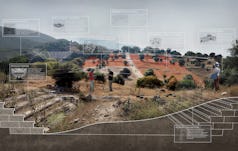
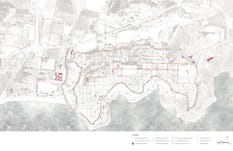
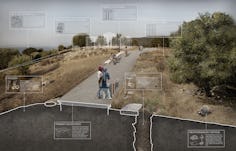
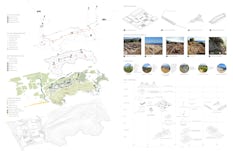
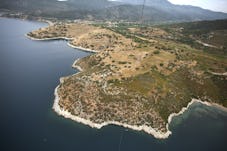
Notion has not only a deep history in terms of occupation by civilizations at least as far back as historically recorded time, but also has a fascinating geological history that shaped the coastline. The site is currently defined by sensitive ecosystems as well as recreational and agricultural uses. Rather than focusing solely on the archaeological heritage of Notion, the design work is conceived as a material praxis that operates through intertwined archaeological, ecological, cultural, and recreational coevolution. Within these contexts, the multifaceted project explores the possibilities for design as both an agent within the temporalities of the site, and as an apparatus that produces subjectivities in relation to matter, time, the environment, and technologies of mediation. Here, deep and slow pasts collide with digital contemporaries to envision what the archaeological park might become in the future. It not only uses architectural strategies to curate a narrative the past, but also aims to bring visitors into more intimate and vital relations with these sites as more temporally comingled things.
Our work has involved the development of a draft site management plan, which not only defines the community and stakeholder engaged process for managing the archaeological heritage of the site as excavations progress and the site becomes formalized as a park, but also provides a vision for integrating the site with its natural and settled surroundings. As part of the plan, we have also developed schematic designs for visitor infrastructure—both physical and virtual—for interpreting the archaeology and ecology, both present and past, of the site.
The Notion site is expansive and while the remains of the ancient city are only lightly buried, it is not expected that any substantial monumental architecture will be uncovered beyond what is already exposed. The archaeological excavation plan will be to focus on the domestic blocks to understand residential typologies, construction, and historical occupation. Various low-impact strategies for visitor interpretation such as Augmented Reality visualization (enabled by a local mesh wi-fi network) and using planting and mowing to make visible the city grid, are being explored in addition to more traditional forms of signage.
The site is also remarkable for its coastal setting, and for its prospect in relation to the surrounding landscapes. Visitor interpretation will presence the deep history and transformations of the site, including the siltation of the Hales River valley and the ancient harbor, the geological formation of the valley, to the contemporary flora and fauna that cohabit on the site. While protecting the archaeological heritage of the site, our work consider how access to can be maintained for local communities, and how the values of these community members can be integrated into the overall future plans. The management plan prefers time-based practices and maintenance processes over manipulating large physical areas of the park, prioritizing low-impact strategies for cultivating attunement to temporal processes and multi-species existences.
| Typology | Landscape, Site, and Visitor experience design. |
| 2014-2019 |
Team
| RVTR | Kathy Velikov, Geoffrey Thün, Dan Tish, Salvador Lindquist, Adam Scheuler, Karen Toomasian, Joshua Krell, Travis Crabtree |
| Kelsey Museum | Christopher Ratté, Felipe Rojas, Angela Committo, Peter Knoop, Matthew Naglak, Gregory Tucker |